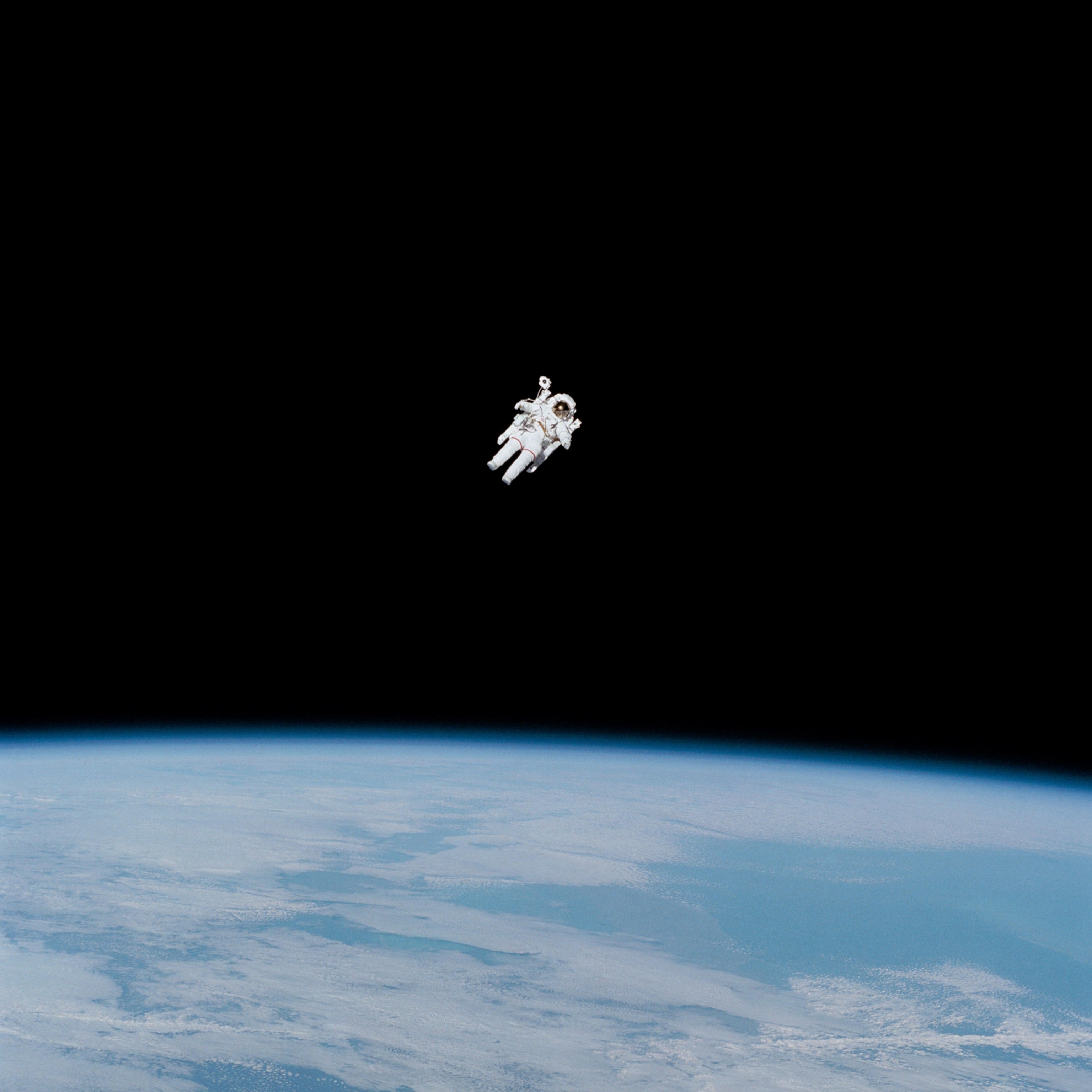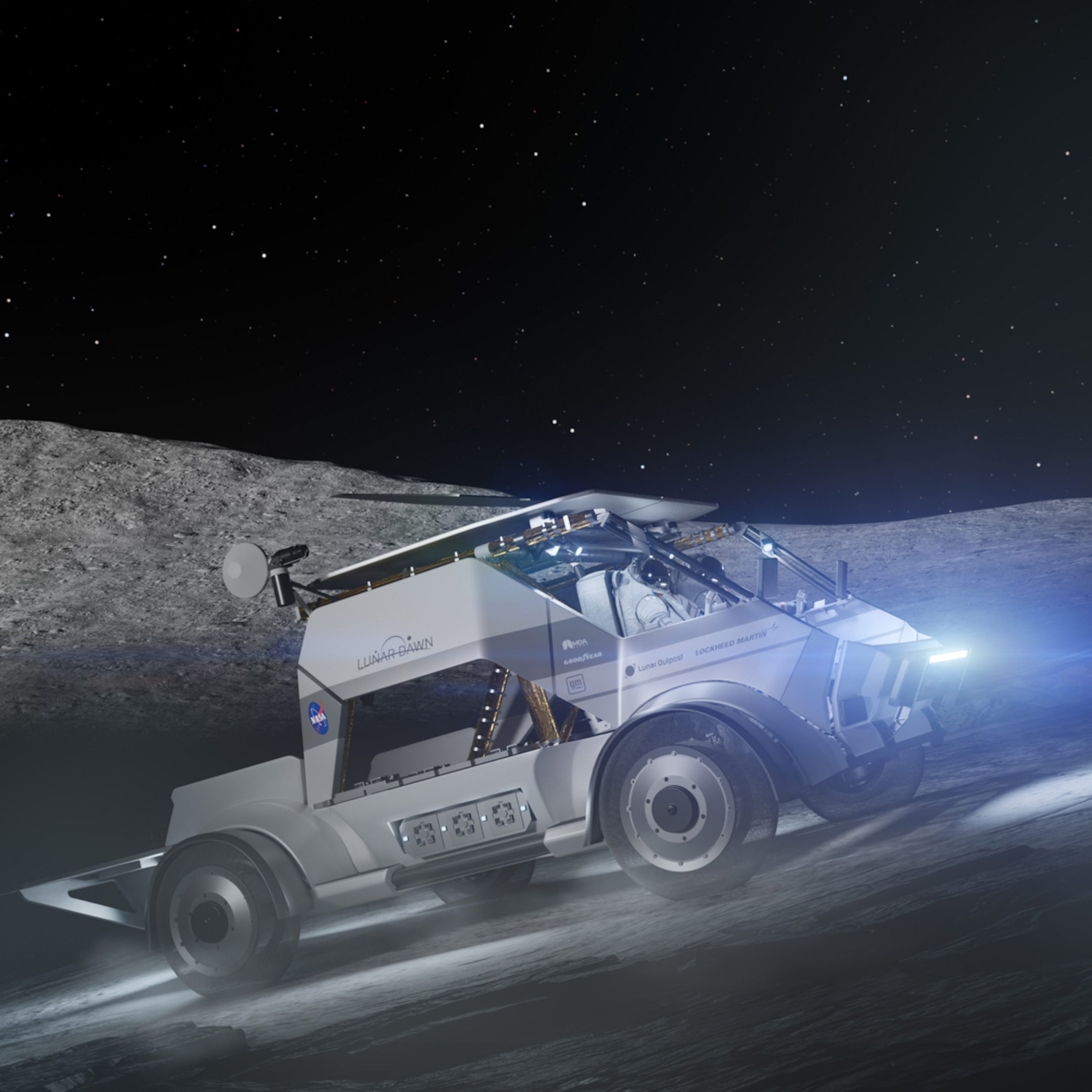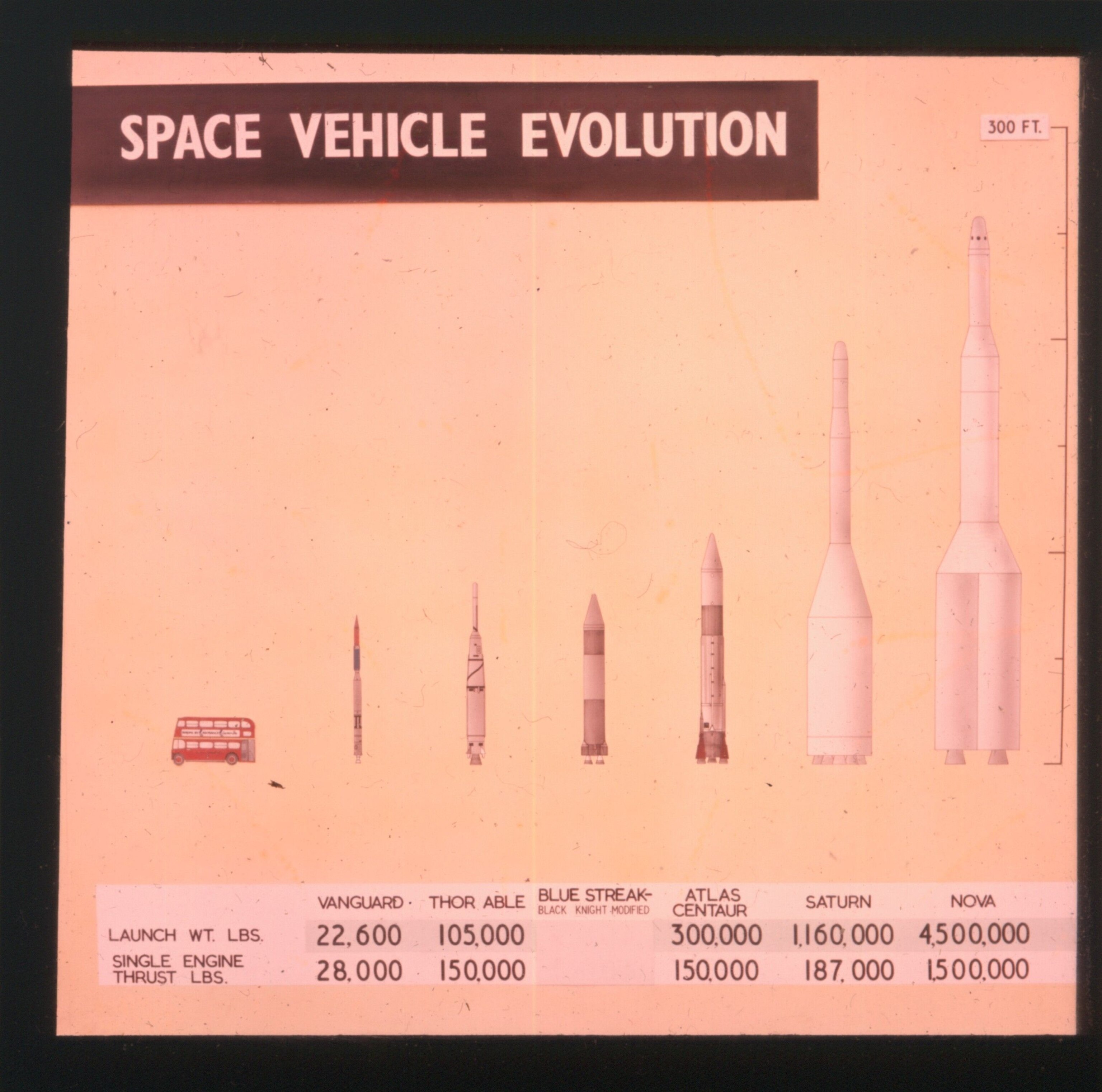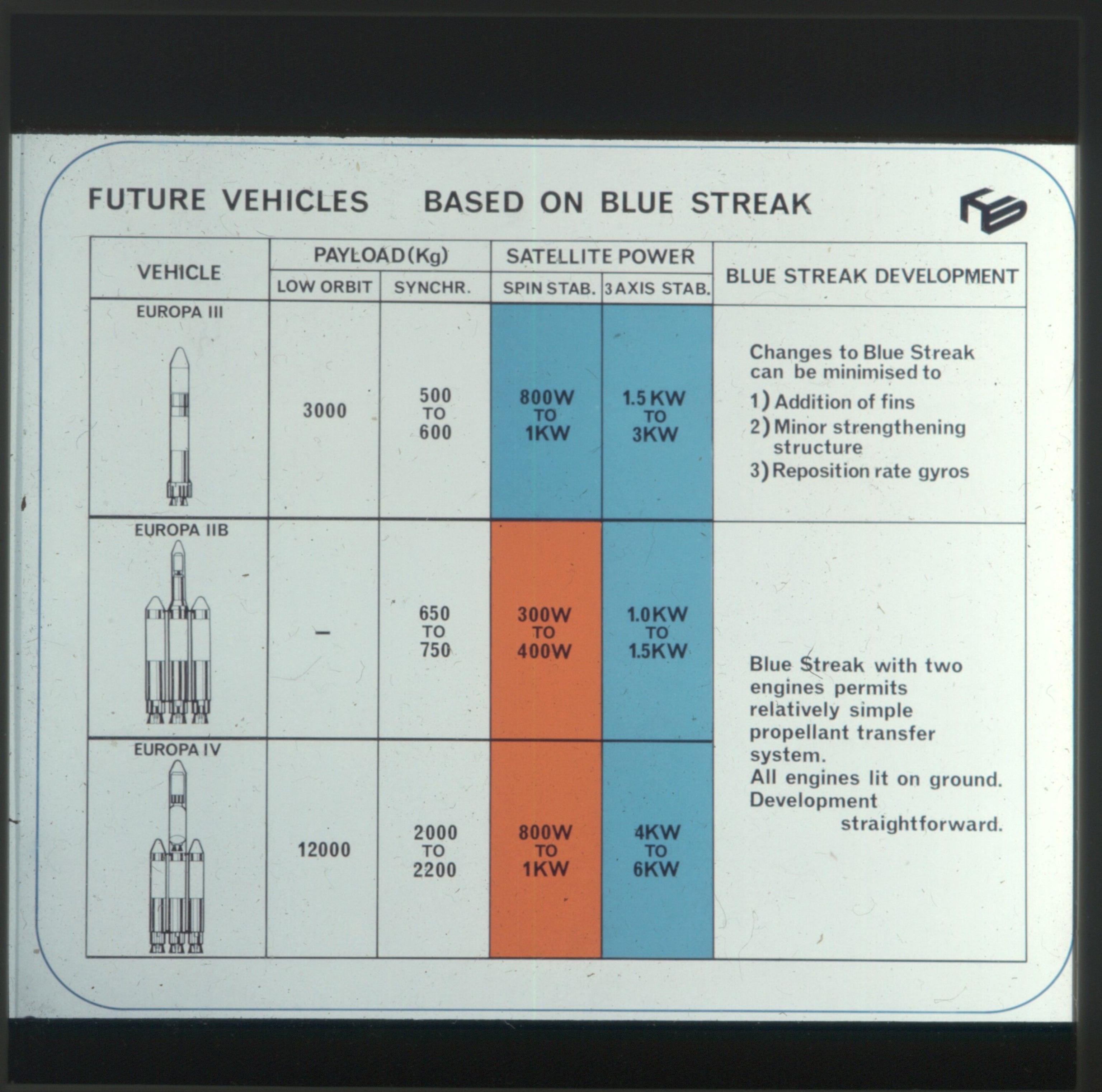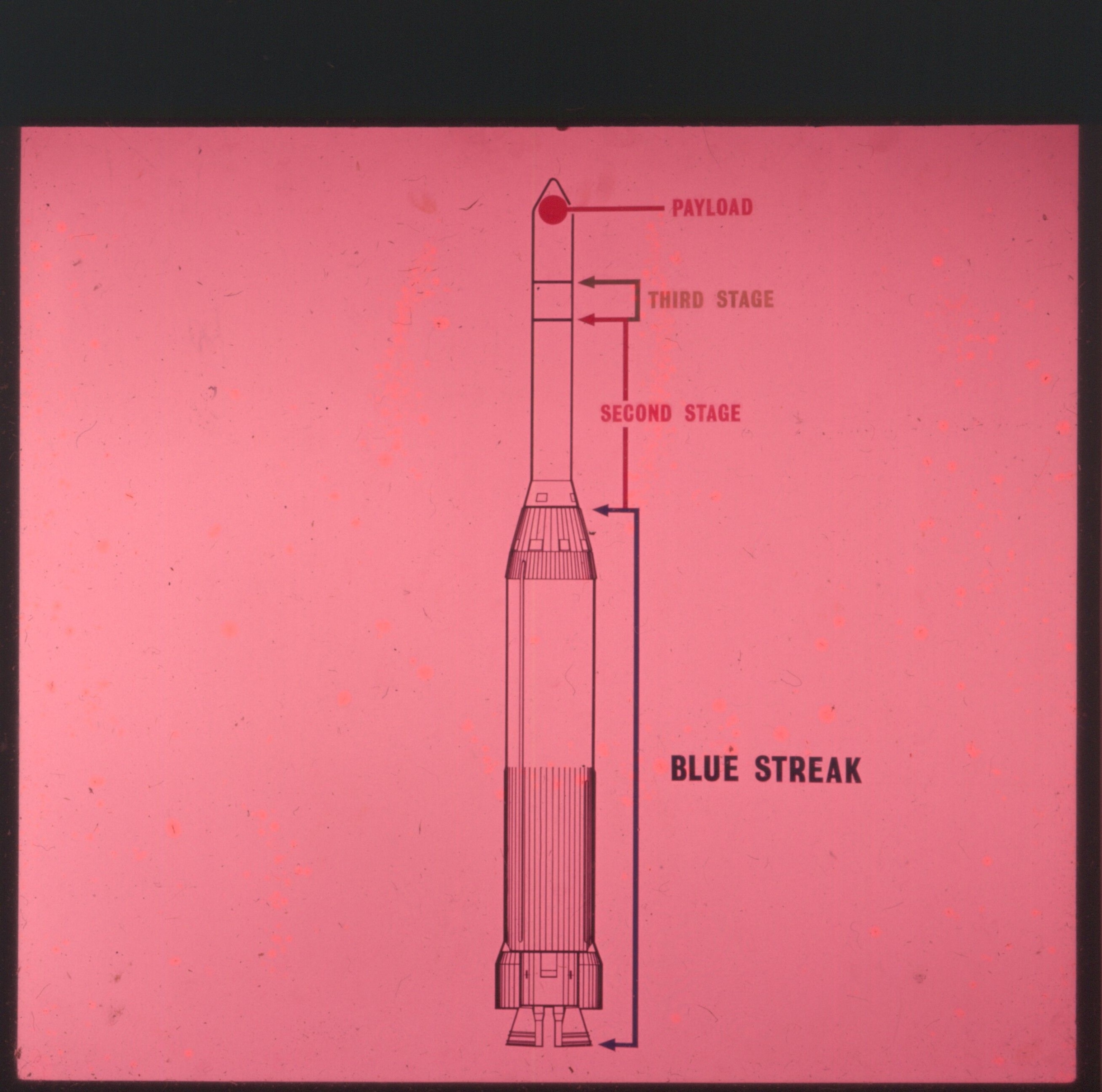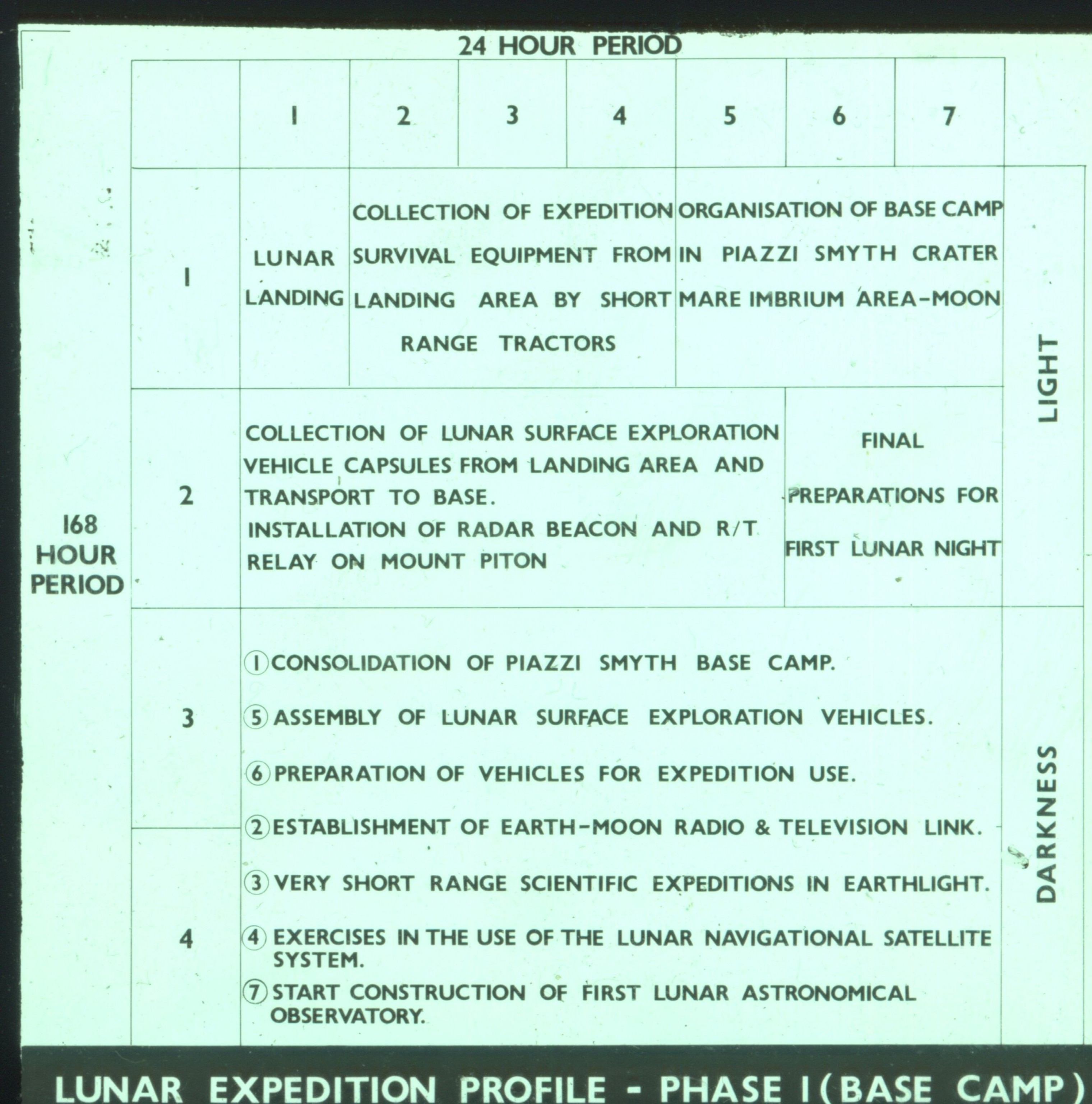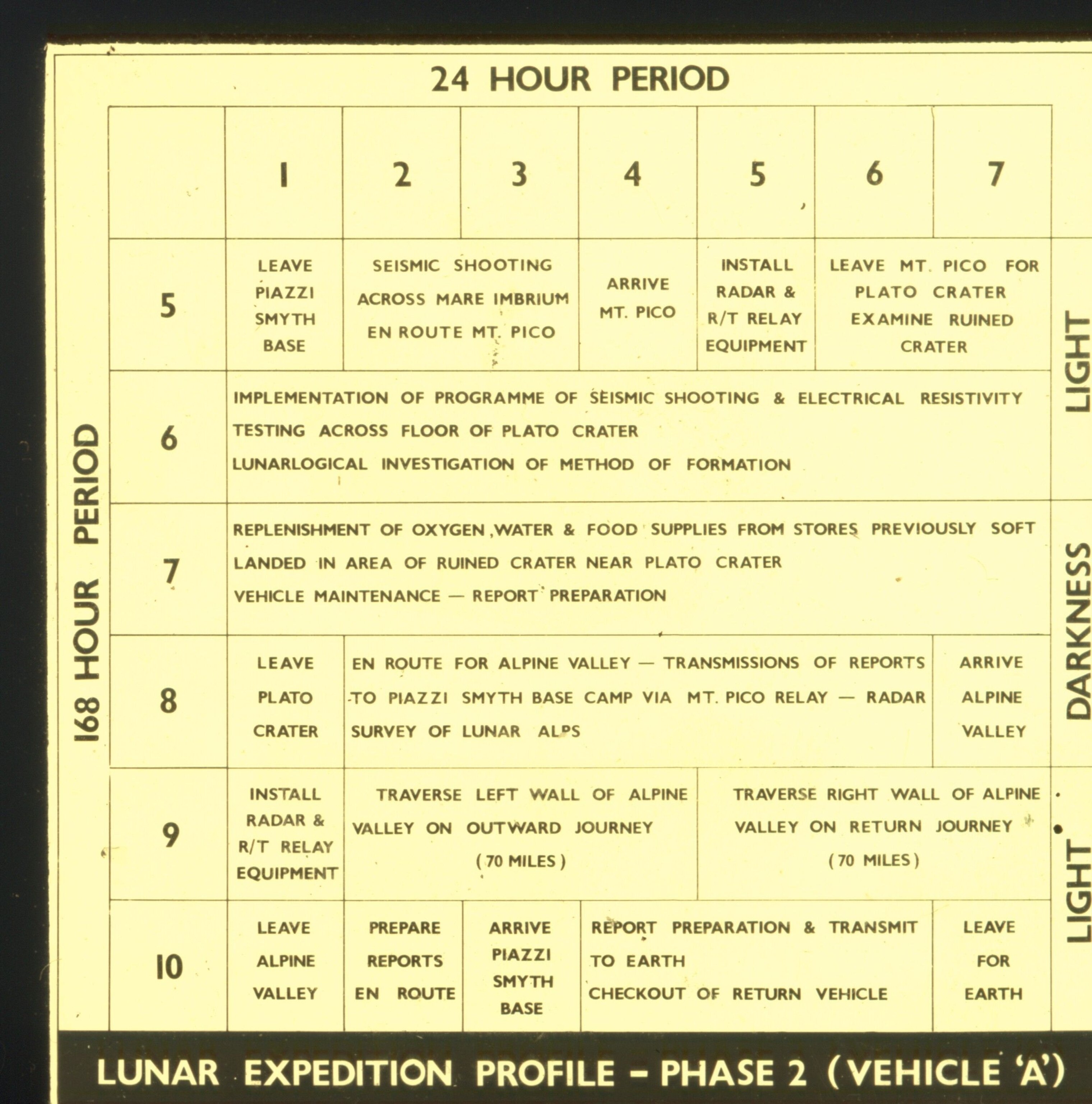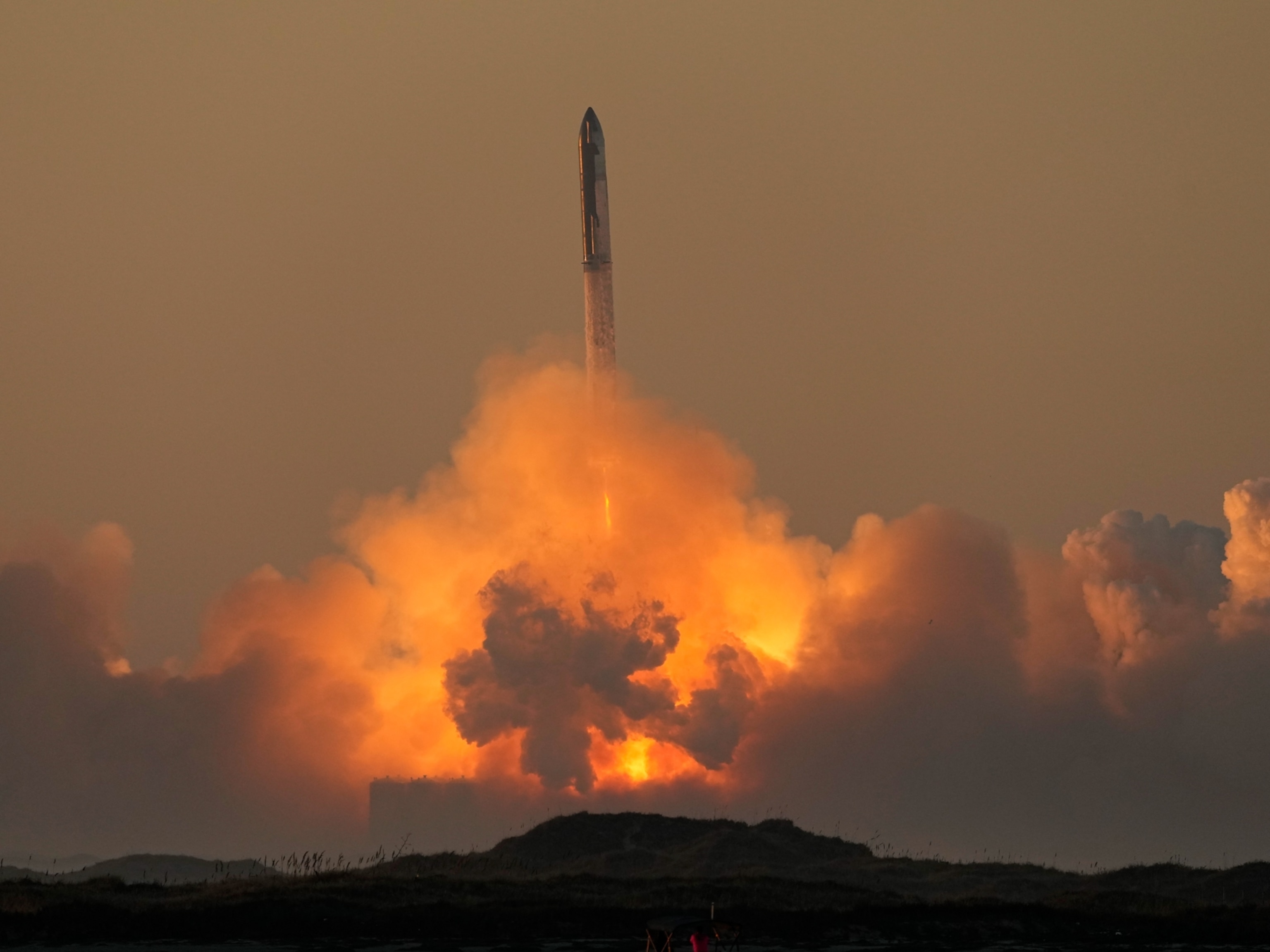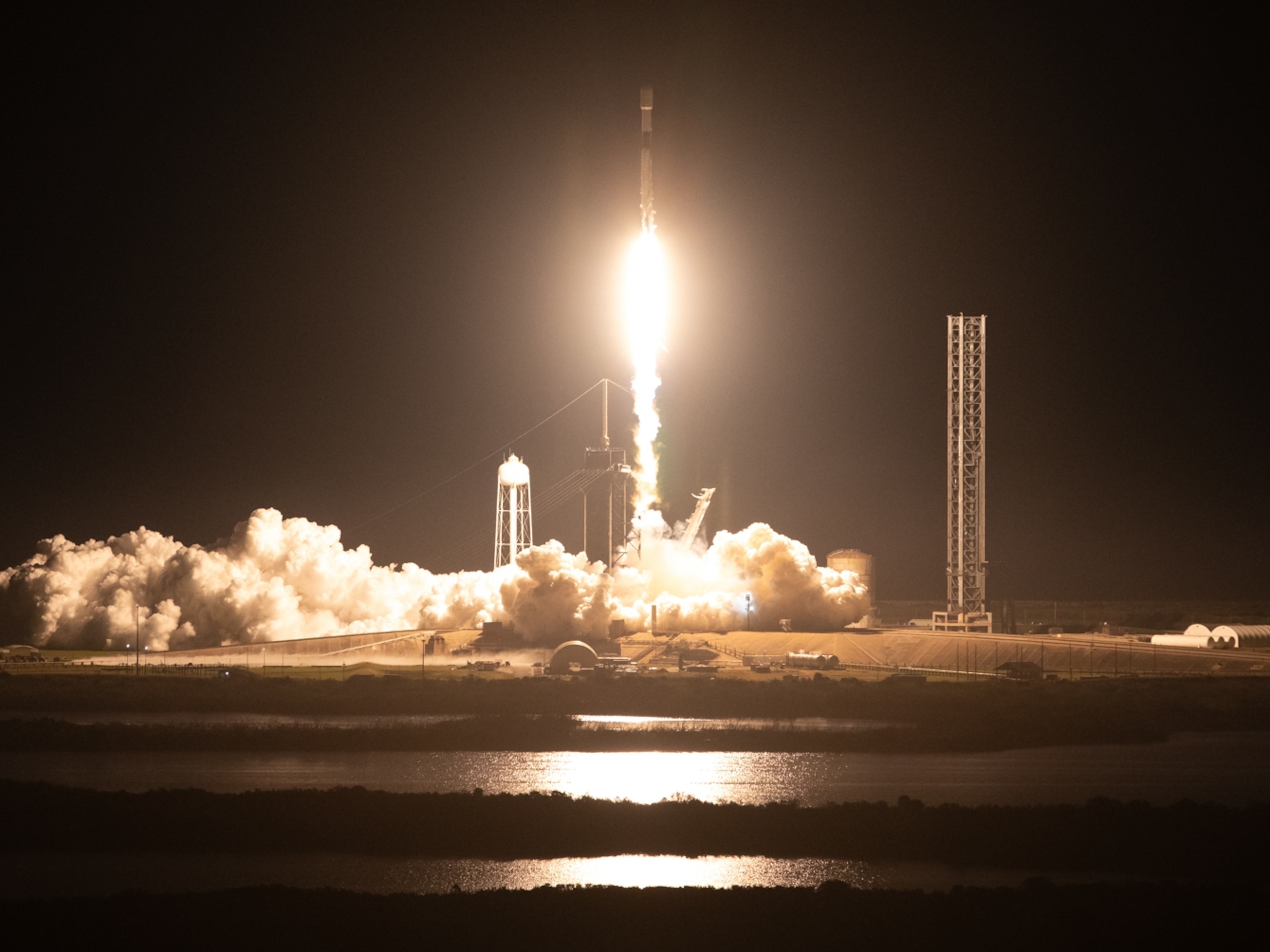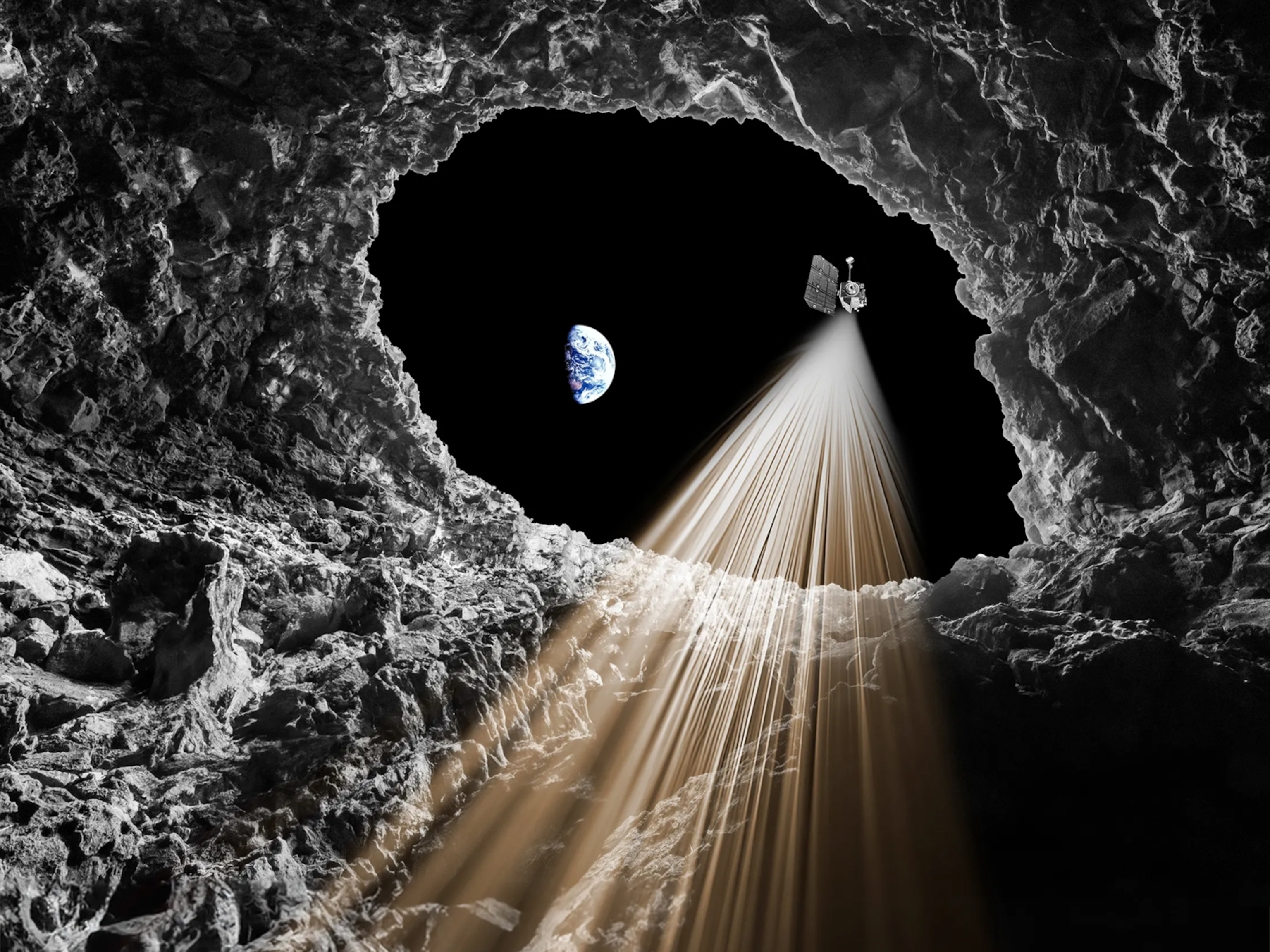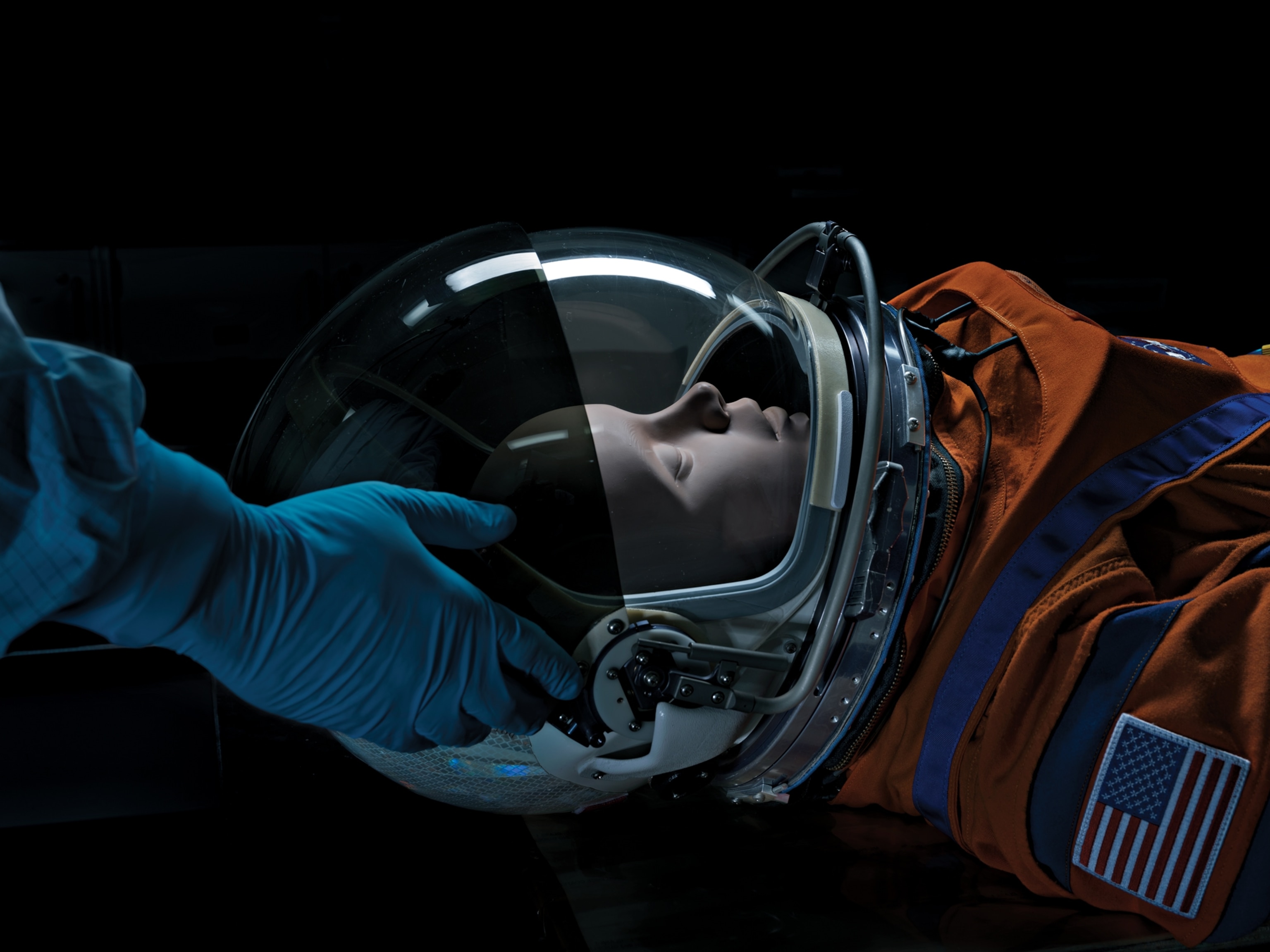
'Lost' plans show Britain was preparing for a moon landing in 1968. What happened?
Documents unearthed in 2019 on the site of what was Britain's only rocket maker align with an obscure presentation from 1960—and suggest the country's moon ambitions were far more than mere fantasy.
At the time of writing only one country in the world has succeeded in getting a human being onto the surface of the Moon. The United States, of course, achieved this in 1969, returning five more times over the next three years—but since 1972 no human has set foot on the Earth’s sole planetary satellite.
It’s not through lack of trying. The Russians famously won the earliest victories in the Space Race when they got the first satellite, Sputnik 1, into orbit in 1957, and then the first man in space—Yuri Gagarin—in 1961. They also did their best to get their feet on the Moon first, by developing a rocket, the N1; they also developed a command module and landing vehicle, with the aim of getting a single Cosmonaut onto the lunar surface. Unfortunately for the Soviets their rocket simply didn’t work.
But the Soviets and the Americans weren’t the only ones with their eyes set on the Moon. In 2019, papers were unearthed from a storeroom at the Stevenage site of the aviation and space giant Airbus. The site was formerly the home of the British aircraft and rocket manufacturer De Havilland, and provided tantalising evidence of plans for a secret and intricate British mission to the Moon dating from the 1950s.
Not just that, but the documents showed clear ambitions to achieve a manned landing as early as 1968—a year ahead of the successful Apollo 11 landing. And according to the project timeline in the cache of papers, which detailed plans for a decade of team selection, testing of equipment, rockets and lunar vehicles—that was just the start of a period of ‘lunar exploration’ from 1970 to 1971.
History in parallel
The documents also specified possible landing zones—specifically in the Piazzi Smyth crater, some 900 miles from the Sea of Tranquillity where Apollo 11 landed—as well as line drawings of an array of extra-terrestrial designs, under the title, "Proposed space vehicles."
Most intriguingly of all the papers included diagrams of the Moon’s surface with references to ‘base camp’ as well as orbital drawings, trajectories and mission stages. Finally the charts outlined plans for what appears to be several 168-hour missions (each divided into seven 24-hour periods) through the lunar days and nights.
Back in 2019 the most that could be hazarded by experts to explain the documents was that in the late 1950s, when the future of Britain’s nuclear ballistic missile program, Blue Streak, was already in doubt, coming up with alternative for the rocket’s use was precisely the sort of thing any self-respecting defense contractor would be doing. As for how far it went or whether there was any more detail, that could only be guessed at: until now.
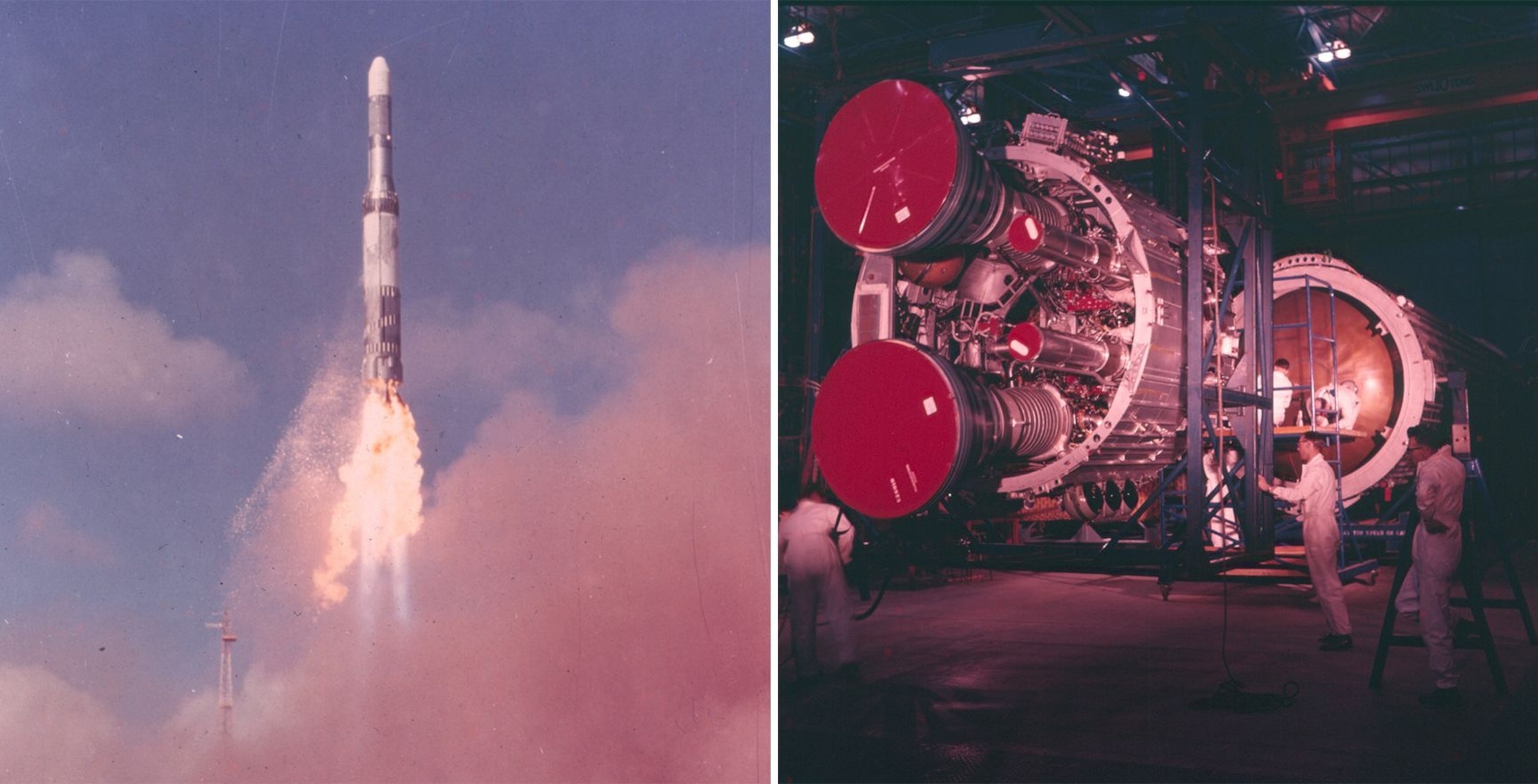
For it turns out that many of the illustrations and diagrams unearthed in 2019 formed the core of a paper presented in London on September 17, 1960, to the members of the British Interplanetary Society, whose ranks included leaders in the field and sci-fi authors like Arthur C. Clarke. The paper, entitled "Surface Exploration of the Moon," was written and presented by one Peter A E Stewart.
‘At the present rate of scientific development, the first large lunar expedition could be mounted in 10 years,’ declared Stewart, with the accompanying document published in Spaceflight, the society’s magazine in March 1961. "This paper outlines such a 10-year programme, examines the problems and some possible solutions and analyses a sample expedition."
Far from being mere conjecture by an imaginative enthusiast, Stewart worked in the Astronautics Section of the Advanced Projects Group at Hawker Siddeley Aviation— based at what is now the Airbus site at Stevenage, where among other things the Blue Streak missiles were built.
Antarctic inspiration
Stewart’s paper begins by making a geological assessment of the surface of the moon before heading into the specifics of a mission. Under the header, "Need for an integrated space programme" he writes: "At this moment when consideration is being given by HM Government to a space programme in conjunction with other countries ... the basic and ultimate aim of such a programme would be the landing of sufficient material on the Moon to carry out in 1970-71 an expedition analogous to the trans-Antarctic expedition carried out by Dr Fuchs."


Fuchs was the British explorer whose Commonwealth team—which was supported by another led by Edmund Hillary—completed the first overland crossing of Antarctica in 1958. "Utilising known and tried techniques, a bold decision now could pave the way to a worthwhile contribution to space exploration."
That this "bold decision" didn’t happen doesn’t negate the towering ambition. Over the next pages, Stewart fleshes out the developmental program outlined in the many Gantt charts found in 2019, and included in his paper: the development of multi-stage rockets, lunar probes, landing vehicles and even lunar surface vehicles—similar though more ambitious still than the lunar buggy which Apollo 15, 16 and 17 used on the Moon.
(We saw the Earth rise over the moon in 1968. It changed everything.)
It even covers team selection and desirable attributes of would be astronauts (such as "high biological efficiency of the body with no latent defects", "stable and compatible psychological personality", and "tolerance to isolation and agoraphobia"). Training should be "carried out giving the team as a whole experience in performance under hostile environments, ie. Underwater swimming, climbing, cave exploration, and polar travel," he wrote.
Many of the illustrations and diagrams unearthed in 2019 formed the core of a paper presented in London on 17 September 1960 to the members of the British Interplanetary Society.
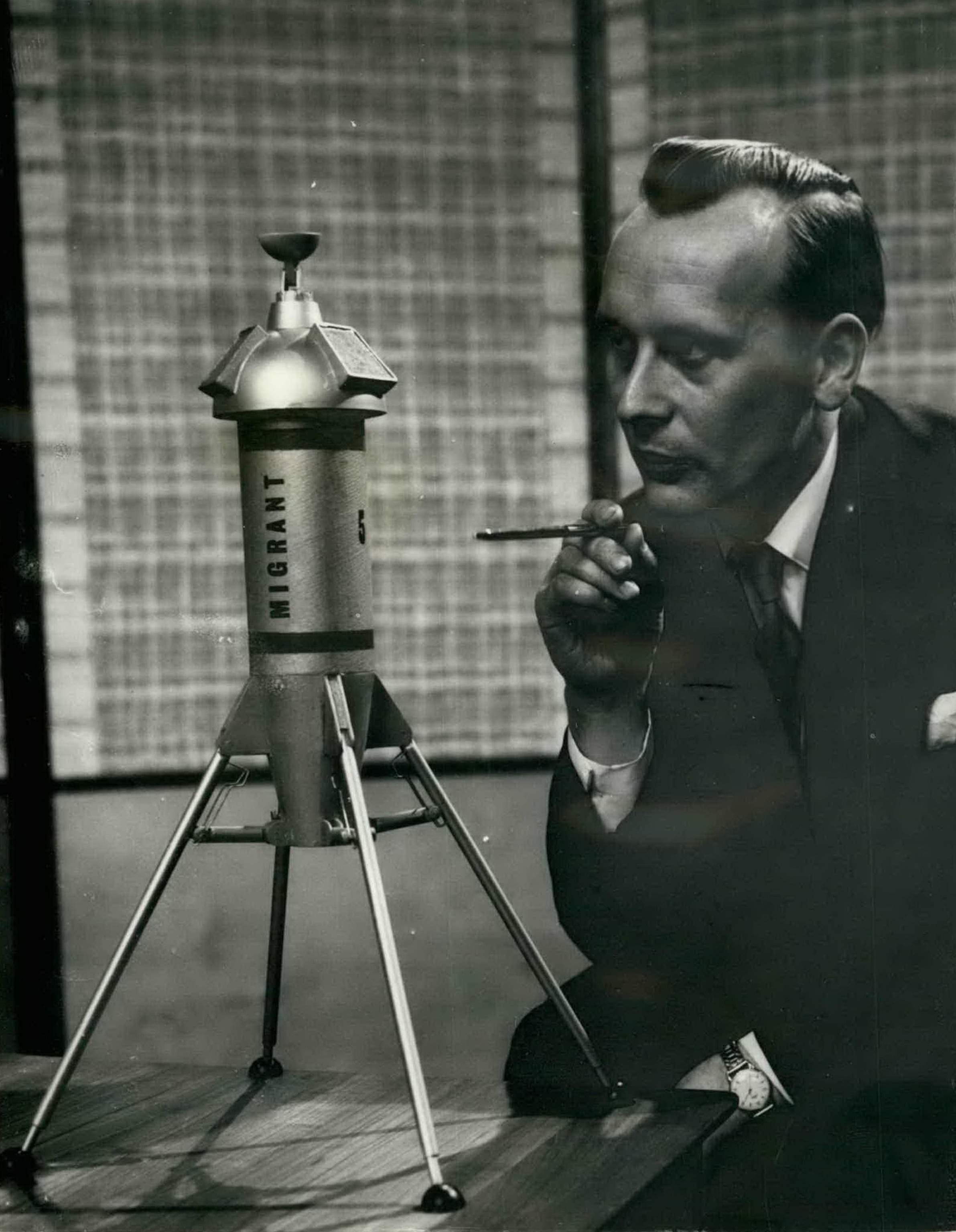
Stewart then outlined the options for a lunar base. "One of the questions to be determined here is whether the base will be above or below ground," he opined. "Another choice will be between inflatable structure, payload life compartments or a 'hard top' fabricated structure. These designs will be evaluated at the desert site during the course of the simulated expedition."
(Related: Here's how Apollo-era artists imagined us living on the moon.)
He then looked at the design of communications systems for use on the Moon and communication with the Earth, and the use of "Lunar soft lander payloads" to deposit key gear on the Moon ahead of any manned mission. "Finally before the arrival of man, a series of automatic tractors or wheeled vehicles may be put down," he wrote. "These will be capable of carrying out short-range local investigations," he added, comparing them to the NASA Prospector, a lunar rover truck concept cancelled in 1962, "with an operating radius of 50 miles."
Getting off the ground
Crucial emphasis, naturally, is given to "Launch Vehicle Development": "The current space booster is the 'Blue Streak/Black Knight' combination," he says, referring to the British-developed first stage and second stage rockets. "The first stage has two Rolls-Royce liquid oxygen/kerosene motors. These motors are similar to those which will power the 'Saturn' vehicle and are lineal descendants of the V-2 motor through various uprated versions" It would be the Saturn V that took Apollo to the Moon, of course.
"Proposed space hardware" also includes one with "manned capsule," and one with a soft landing probe. According to the plan, many of these would go through simulated use on Earth and then be tested in lunar orbit from 1966. "Following the successful proving of the launch vehicle a high energy third stage using liquid oxygen and liquid hydrogen could be employed," wrote Stewart. "This could give an orbital capacity of about 2,500 lb and may be of interest for a manned capsule for the RAF."
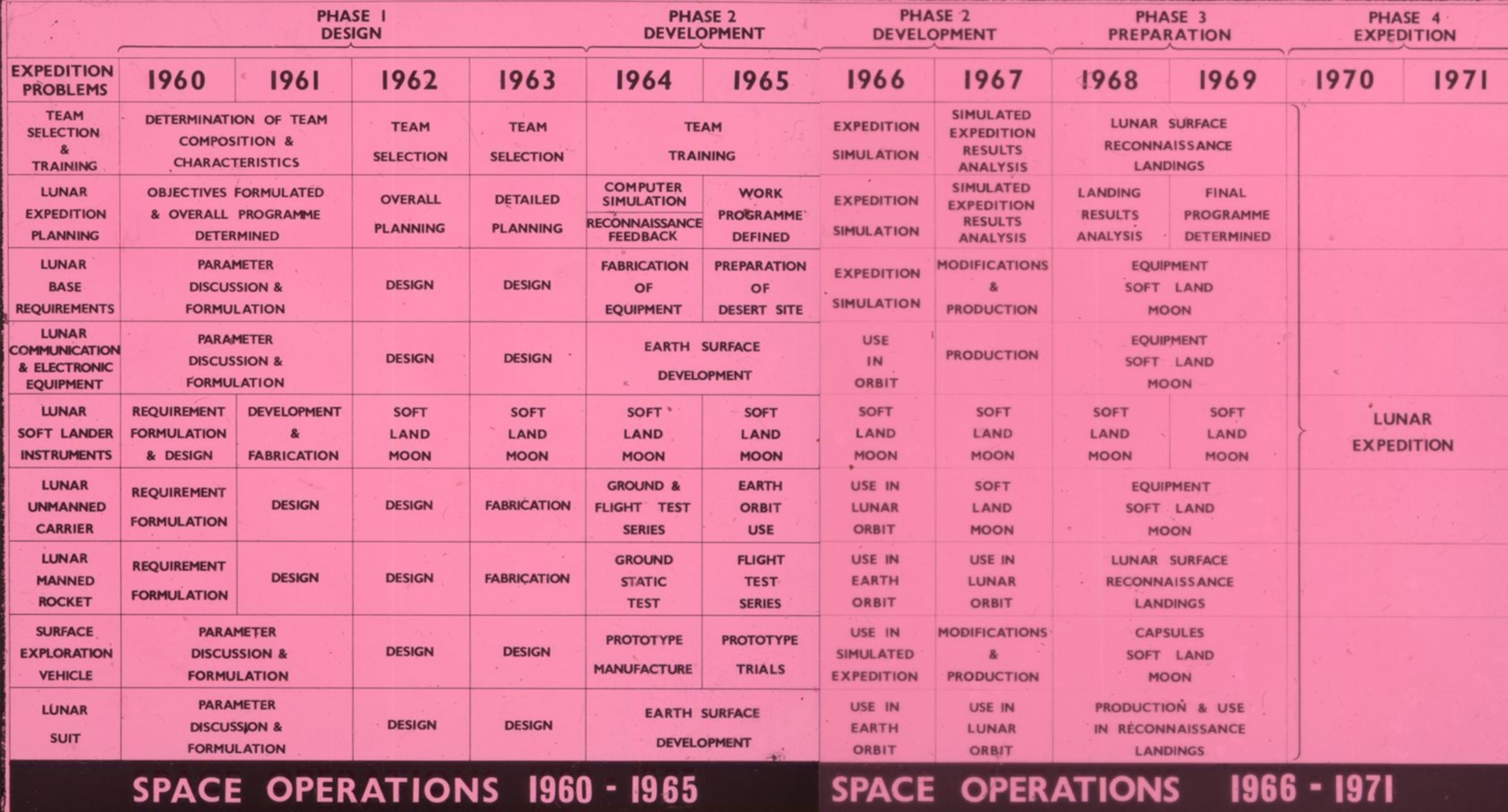
The next phase of development could possibly put 4,000 Ib. in a 300-mile orbit and about 450 lb. on the Moon, he said, adding: "Very little work would be required as the motor could be a Pratt and Whitney motor made under licence. This type would allow a large manned capsule and soft-land payloads." Meanwhile work would be underway on a "larger vehicle"—a Saturn equivalent—noting that instead of being wasted after each take off it would designed to "function in the form of a supersonic glider after 'burn-out'". "Eight 'Blue Streak' motors would be mounted, two per arm ... guided on re-entry and could be recovered by parachute’. In other words, like rockets used by Elon Musk and Jeff Bezos, the British space launcher would be reusable.
Stewart even dilated on a later third stage of development which could be a nuclear-powered engine "capable of soft landing from 5 to 7 tons on the Moon." He adds: "Such a programme as this would utilise tried and proven hardware except for the nuclear motor development and the standardisation should give a high degree of reliability."
He also envisaged the use of a 65 footlong lunar surface vehicle with a crew compartment and three airtight compartments—"mounted on two bogies [wheeled chassis] and having a power generation trailer"—which would be delivered to the moon in seven capsules. This contained controls, monitors, living quarters, loos, showers food storage: "The vehicle is controlled by the driver in the conning dome who can see by closed circuit television on four channels."
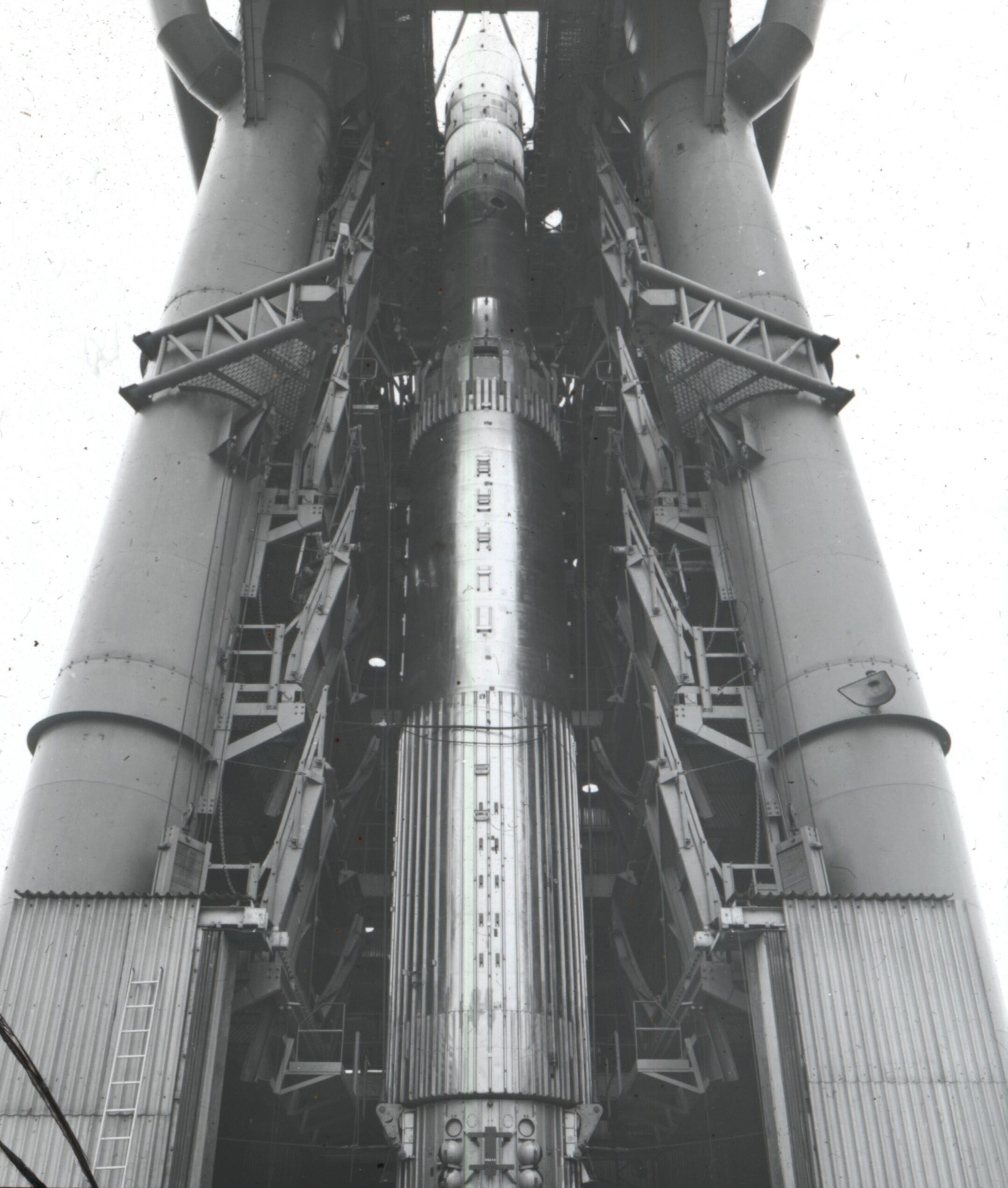


Next he explains "The lunar suit"—including the need for cooling systems and protective visors and radiation monitoring ("a Geiger tube with an auditory output in the helmet" to warn of exposure), as well as in built communications systems, and simple identification systems.
"Throughout 1968-69 the final preparations will be made, the capsules being landed on the Moon in an area between [Mt] Piton and Piazzi Smyth. The return vehicle will have been placed on the lunar surface and sometime in 1970 the expedition will leave the Earth to touch down from Piazzi Smyth and Mt Piton at the commencement of the lunar day."
(13 amazing facts about our Moon.)
He then explores the expedition in 24 and 168 hour periods, setting out the tasks which include the construction of the first lunar surface astronomical observatory and the establishment of "an Earth-Moon radio and television link." Working in lunar day and then through darkness, he writes: "If the programme is proceeding well, very short range scientific expeditions can be made in Earthlight. ... Finally on the last day of the lunar light period at the end of a 10 week sojourn on the Moon, the return vehicles will take off on their homeward journey. After four days they will enter the upper limits of the Earth’s atmosphere having completed the first expedition to another planet in space."
Fantasy—or strategy?
Intriguingly, at the end of the paper, Stewart added a note of thanks to several colleagues who created the illustrations included with it, stating: "The opinions expressed in this paper are the personal views of the author and do not necessarily represent the views of Hawker-Siddeley Aviation."
Which is possibly true. But it may also have been a smokescreen for a genuine corporate desire that was being shared at a friendly and influential forum—namely the British Interplanetary Society.
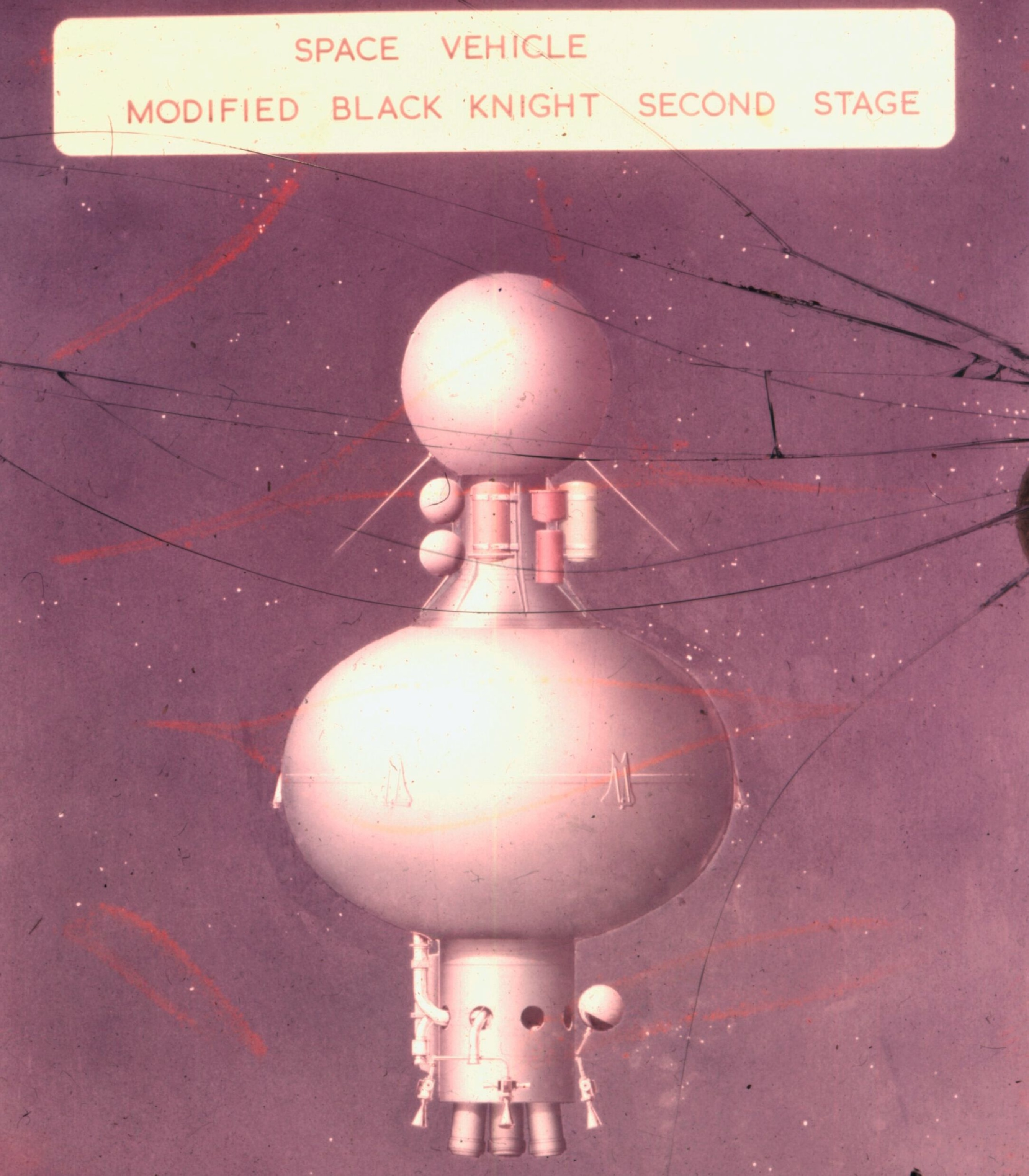
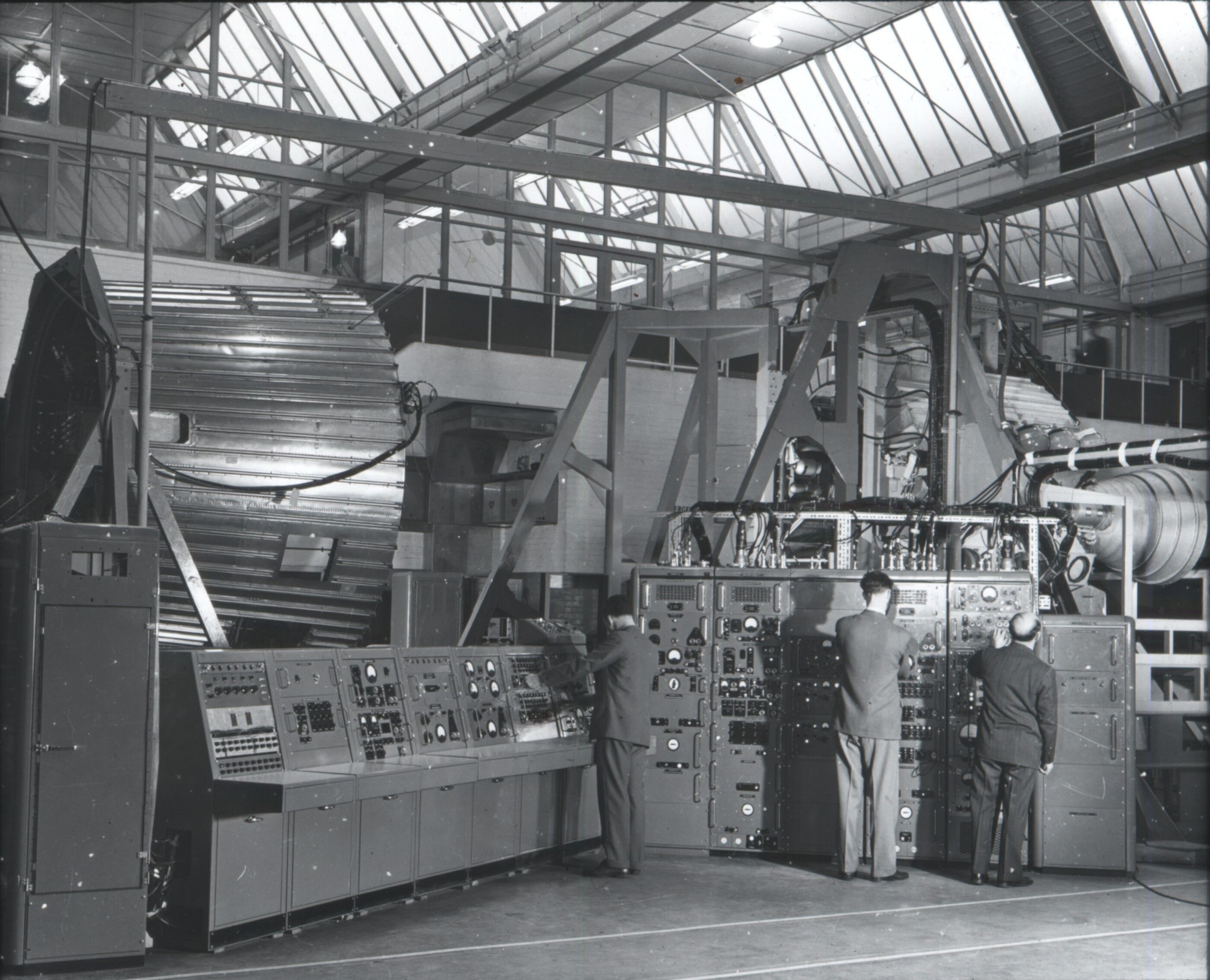
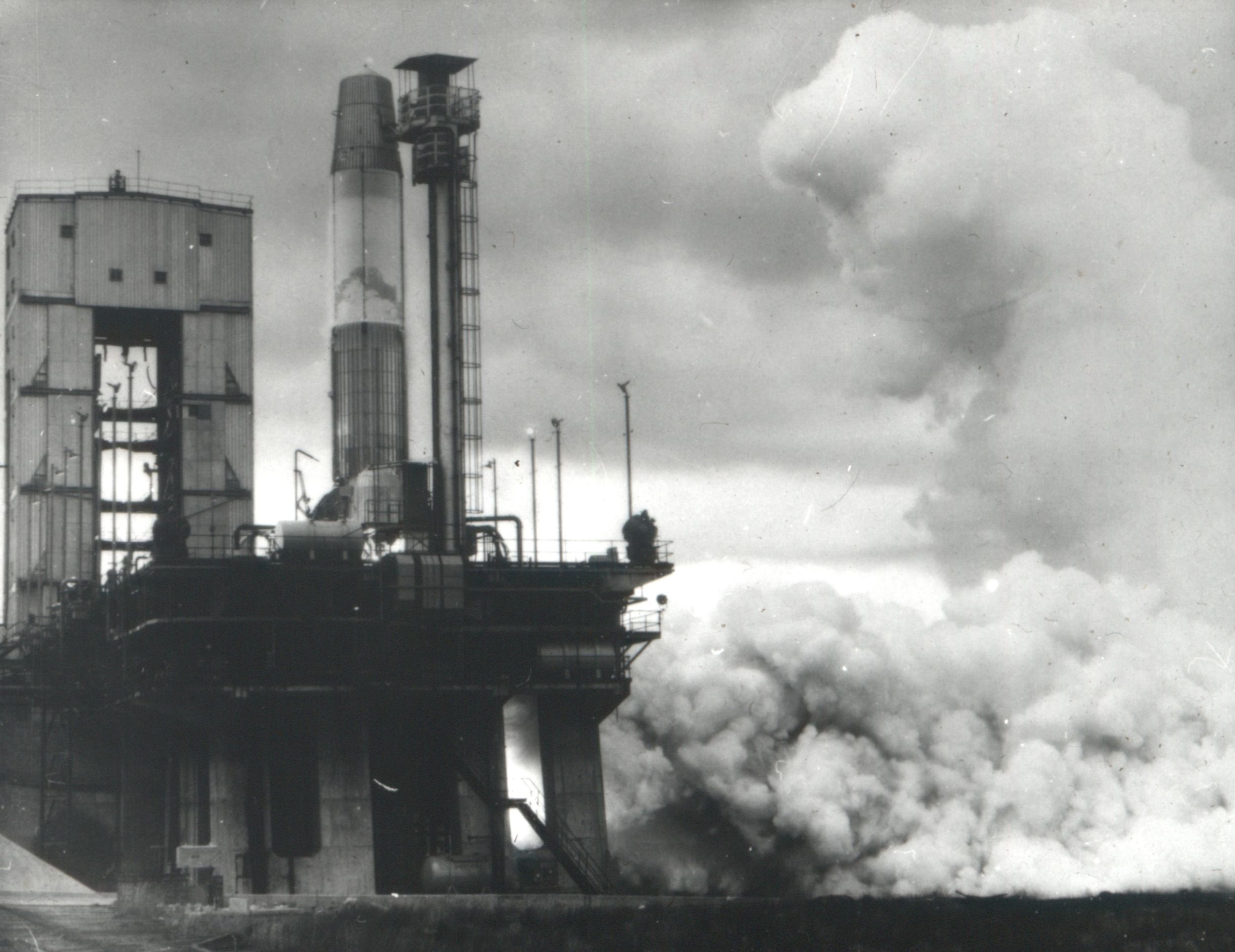
What we know for sure is that 1961 also saw the publication of the autobiography of Sir Geoffrey de Havilland—a giant of aviation who brought us the Mosquito fighter bomber and the world’s first jet airliner, the Comet. Crucially he had sold de Havilland to Hawker-Siddeley in 1960. Writing in his autobiography Sky Fever, he confirmed that "from 1959 onwards our engineers had been considering ways in which Blue Streak could be used for the exploitation of space"—with the launching of military and civilian satellites most in mind (de Havilland foresaw the development of satellite navigation in addition to telecommunications).
However, not only does it seem likely that Peter Stewart, who also produced a paper on the use of liquid hydrogen in space propulsion at another conference in 1961, was one of those involved in this work, but it’s clear that Sir Geoffrey thought Britain could have gone it alone in space.
"It is within the performance of a Blue Streak multi-stage rocket to put a manned capsule into orbit a few hundred miles above Earth (say a 2,000-lb capsule at 300 miles above the Earth)," wrote de Havilland. "In the year following the cancellation of the military weapon, development of appropriate parts of Blue Streak as a space vehicle was continued at a slower tempo, pending a decision to enter a full scale programme."
One of those who remembers these days first hand and agrees with de Havilland is British space engineer Bob Parkinson, visiting professor at Queen Mary University and Cranfield University. He worked at what was then the Rocket Propulsion Establishment at Westcott in Buckinghamshire in the later 1960s before moving to what had been the de Havilland site at Stevenage.
Parkinson, later president of the British Interplanetary Society and one of inventors of the HOTOL space plane concept, knew of Peter Stewart. He believes that he might have been part of an advanced projects team at Hawker Aircraft’s factory site in Kingston-upon-Thames, where just a decade or more before in the 1940s they had manufactured Hurricane fighters.
Parkinson recalls that an influential engineer at Kingston, Bill Hilton, also a big figure at the society, remained a "strong advocate for space flight" and led a team that prepared plans for a lunar mission.
From 1959 onwards our engineers had been considering ways in which Blue Streak could be used for the exploitation of space.Geoffrey De Havilland, Sky Fever (1961)
Parkinson, who describes Blue Streak as "a smaller and improved version of Atlas," believes it could have got a man into space. "It was a little bit small," says Parkinson who worked on the three-stage European launch system, Europa, but adds: "There were studies on growth scenarios for it. One of them was to tie three Blue Streaks together."
The resulting craft "looked like Elon Musk’s heaviest launch vehicle" the Falcon Heavy, and would have had more combined thrust than the Mercury Friendship 7, which took John Glenn into orbit in 1962. "That would certainly have got you in the early stages of a manned programme and Bill Hilton’s group actually looked at designing an orbital vehicle to go on top of something like that," he says. Parkinson also confirms: "There was a design for a manned version of a large Blue Streak system." He’s in no doubt that this "uprated Blue Streak" (which relates to the ideas in Peter Stewart’s paper, too) could have got British astronauts into space. "Remember," adds Parkinson, "Atlas launched Mercury, so we’re certainly talking about something as large."
Lost chance
But the manned programme never happened. Rather than becoming space pioneers, Britain used its money to build hospitals and motorways, according to Doug Millard, a curator from the Science Museum. Instead, Britain sought to build alliances across Europe and the Commonwealth to share the costs of space for what would be unmanned projects of everyday use on Earth such as satellite development—which was where financial return lay. This led to the Europa rocket which Bob Parkinson worked on, as part of ELDO—the European Launch Development Organisation—which successfully used Blue Streak as the first in a multi-stage rocket launch system in the early 1970s from Woomera in Australia. A multi-stage launch was never mastered, and Britain pulled out of ELDO in 1971.
By then the Americans had got to the Moon. And while exploration at its most cathartic, as far as anyone could see, there still wasn’t any money in it.
(Related: 50 favourite images from Apollo.)
"Politically, sending people to the Moon just wouldn’t have been on their radar," says Millard, who points to the enormous $257 billion cost of Apollo. "The government had so much more important things to think about." As a result Millard doubts that documents like Stewart's would even have reached ministerial level. But for all his skepticism, Millard concedes that Blue Streak could have gone further had there been the political will to do so.
Does he agree that Britain could have at least achieved the equivalent of Project Mercury and got a man into orbit? "If the defining requirement of getting an astronaut into space is the right sort of rocket, which seems reasonable, then yes—Blue Streak could have been that rocket," adds Millard. "But there are one or two other requirements which we never had, principally the money. We never had the money."
Which means the trove of documents discovered in Stevenage in 2019, Stewart's paper and the diagrams and dreams encapsulated in it, remained just that: fantasies. But it could have been very different.
Six decades on, Britain may have been commemorating someone like Eric "Winkle" Brown—the RAF test pilot who worked on Britain’s original supersonic jet—instead of the likes of Yuri Gagarin or John Glenn. If ministers and officials wanted it that way, it’s likely someone like Brown could have been in the hot seat.
This article was adapted from the National Geographic U.K. website.

